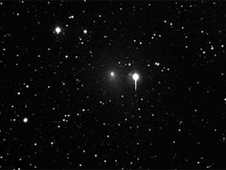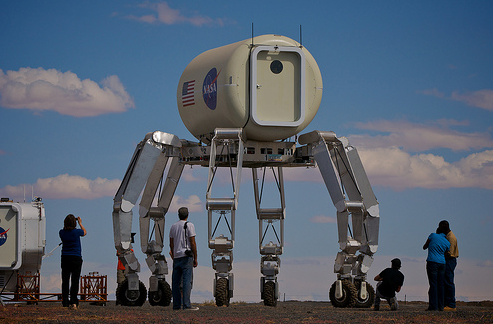 Teachers – Get Ready!
Teachers – Get Ready!The Year of the Solar System
 Teachers – Get Ready!
Teachers – Get Ready! Teachers – Get Ready!
Teachers – Get Ready! NASA’s Desert RATS, or Research and Technology Studies, will make its 13th trip to the desert this fall for another round of analog testing.
NASA’s Desert RATS, or Research and Technology Studies, will make its 13th trip to the desert this fall for another round of analog testing.
 NASA is inviting the public to choose an area in northern Arizona where explorers will conduct part of the annual Desert Research and Technology Studies, known as Desert RATS.
NASA is inviting the public to choose an area in northern Arizona where explorers will conduct part of the annual Desert Research and Technology Studies, known as Desert RATS.
“Desert RATS is an annual test where NASA takes equipment and crews into the field to simulate future planetary exploration missions,” said Joe Kosmo, Desert RATS manager at NASA’s Johnson Space Center in Houston. “We want the public to be a part of this.”
From July 27 through Aug. 8, 2010, space enthusiasts can vote where to send the Desert RATS team, which includes engineers, scientists and astronauts.
 The last external tank (designated ET-138) scheduled to fly on a shuttle mission was completed on June 25 at NASA’s Michoud Assembly Facility near New Orleans. ET-138 will travel on a 900-mile sea journey to NASA’s Kennedy Space Center in Florida, where it will support shuttle Endeavour’s STS-134 launch.
The last external tank (designated ET-138) scheduled to fly on a shuttle mission was completed on June 25 at NASA’s Michoud Assembly Facility near New Orleans. ET-138 will travel on a 900-mile sea journey to NASA’s Kennedy Space Center in Florida, where it will support shuttle Endeavour’s STS-134 launch.
Taller than a 15-story building and more than 27 feet in diameter, the external tank feeds 145,000 gallons of liquid oxygen and 390,000 gallons of liquid hydrogen to the main engines. The three main components of the external tank include a liquid oxygen tank, liquid hydrogen tank and a collar-like intertank. The intertank connects the two propellant tanks, houses instrumentation and processing equipment, and provides the attachment structure for the solid rocket boosters.
When ET-138 arrives at KSC, it will be mated to shuttle Endeavour and solid rocket boosters for the STS-134 mission, scheduled to launch no earlier than mid-November 2010.
To read more about the mission, visit the NASA website at https://www.nasa.gov/topics/shuttle_station/features/et138_rollout.html.